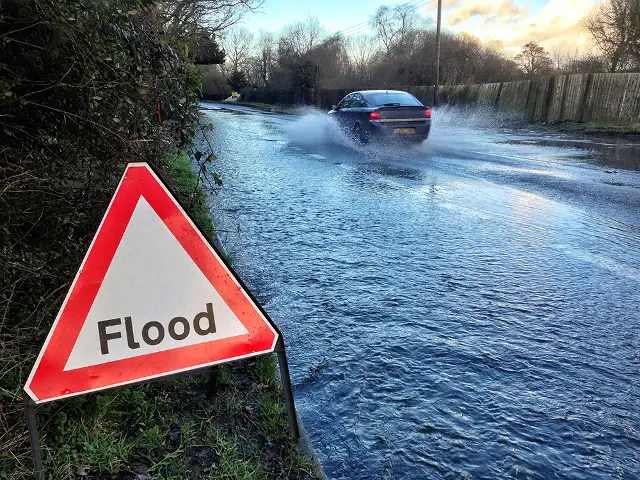This in from Claire on behalf of Island Roads. Ed
A new campaign has been launched to help raise awareness and coordinate steps to reduce the risk of highway flooding on the Island this winter.
The Isle of Wight Council, Island Roads and the Environment Agency have come together to launch the ‘Ditch It’ campaign that reminds land and property owners what they need to do to prevent localised flooding.
Responsibility of land-owners
Homeowners and landowners also have a duty under the Highways Act to ensure adequate land and property drainage systems are in place and to stop water, vegetation and other debris from straying onto the highway. They must also ensure drainage ditches on their land are well maintained and clear of obstruction.
Anyone who has land adjacent to a watercourse (eg river or stream) has responsibilities in respect of flooding such as maintaining the bed and banks of the watercourse, clearing obstructions and maintaining flood defences.
As part of the campaign, an information leaflet has been produced that outlines these responsibilities and those of the key agencies. Information has also been placed in the local media while bespoke advice will also be communicated to key groups of residents.
Much that land and property owners can do
Phil Jordan, Isle of Wight Council’s Executive Member for Public Protection and the PFI., said,
“Though severe weather and tidal conditions mean sometimes flooding is inevitable, there is still much that land and property owners can do to help reduce the risk or mitigate the effects of flooding when it does occur.
“While the IW Council, as the Lead Local Flood Authority, the Environment Agency and Island Roads all have statutory duties to help prevent and tackle flooding, the general public- particularly those whose land includes or adjoins a watercourse – also has a vital role to play.
“Flood water on the highways is a nuisance for everyone and it may well be that there are many land and property owners who are unaware of the role they must play in tackling flooding. This campaign is about helping those people understand their responsibilities.”
Specialist drainage teams
Paul Herbert, Island Roads service director, said:
“We work all year round to use high-pressure jets to clear drainage systems and gullies, repairing defects as well as putting in place several new major drainage schemes in areas prone to flooding.
“The PFI funding is also enabling more thorough maintenance work to be carried out by specialist drainage teams. This will not only make the network safer to use during wet weather, draining the water away from the surface, it will also prevent the deterioration of the roads.
“In inclement weather our staff are also out whenever and wherever they are required to keep the network as safe as possible. But while in extreme conditions, flooding is sometimes inevitable, there is still a lot that landowners can do reduce flooding and the disruption and damage it brings. Rural roads in particular rely to a great extent on ditches to remove water and landowners need to keep them clear to ensure they are effective.
“We hope that this campaign will give all those with a role to play in preventing flooding all the information they need, so that together we can try to ditch the problem of highway flooding.”
An important initiative
Wesley Jones, the Environment Agency’s Partnership and Strategic Overview team leader for Hampshire and the Isle of Wight, said:
“The Environment Agency are pleased to join together with Island Roads and the IW Council, seeing the Ditch It campaign as an important initiative. The proactive maintenance programme, being under taken by Island Roads, is integral to managing surface water flooding, which has the potential to affect us all at some time.
“We would also like to take this opportunity to remind those members of the public whose properties adjoin a river, of the important role they can play in reducing flood risk to themselves and others, by keeping the banks of the river clear of anything that has the potential to cause an obstruction if it is washed away.”
Image: © Island Roads





